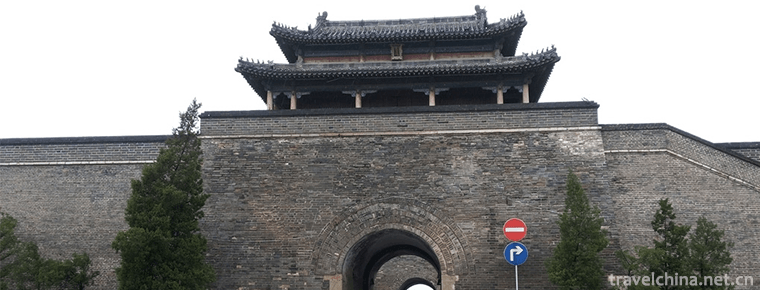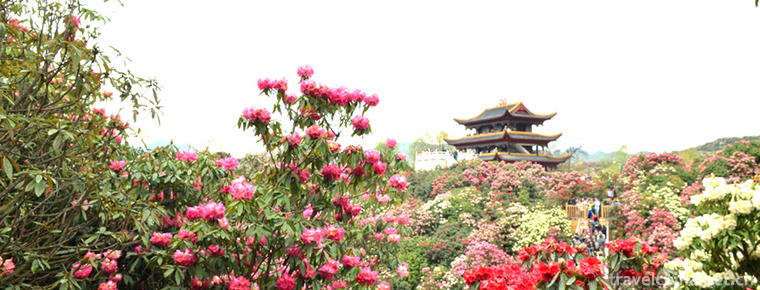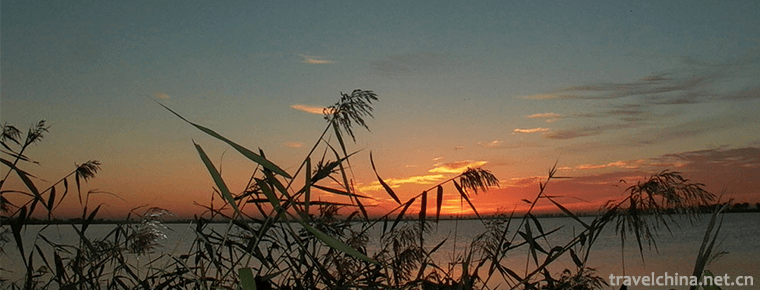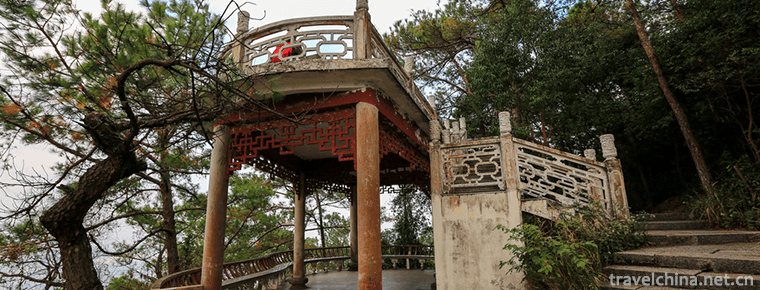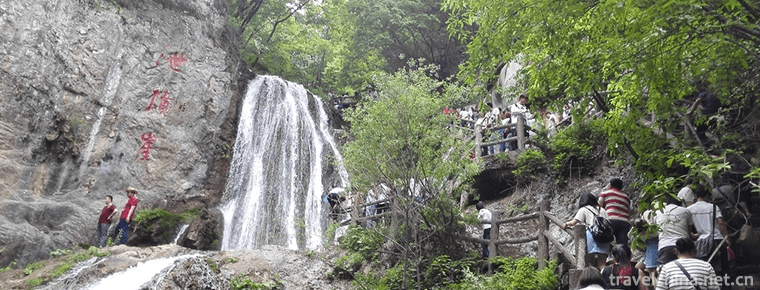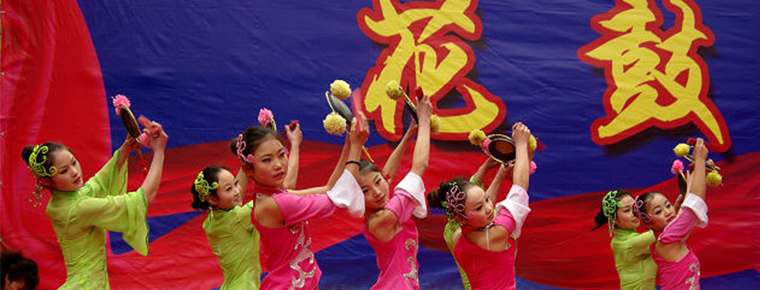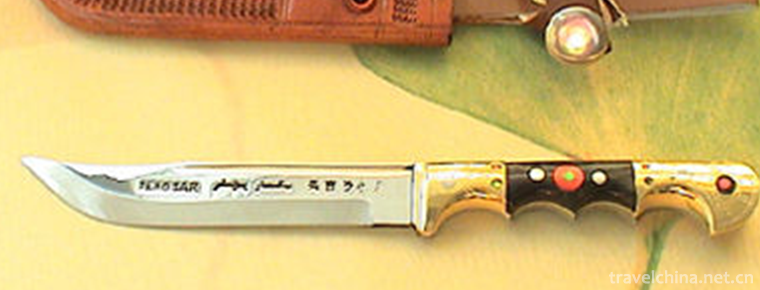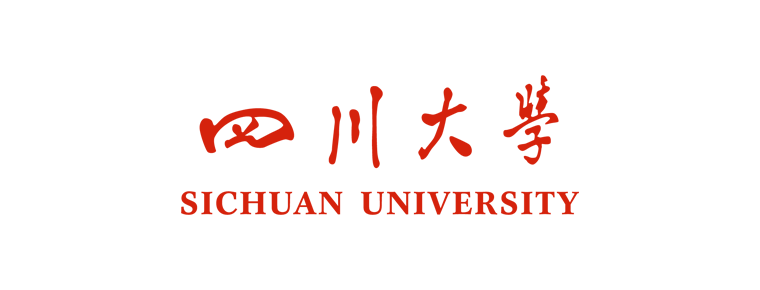Manufacturing Techniques of Fukushima Ship with Watertight Cabin
Manufacturing Techniques of Fukushima Ship with Watertight Cabin
The manufacturing technology of watertight compartment Fukushima, the local traditional handicraft technology of Jiaocheng District in Jinjiang and Ningde City, Fujian Province, is one of the national intangible cultural heritages.
With camphor wood, pine wood and Chinese fir as the main materials, watertight compartment Fukushi's manufacturing technology adopts the core techniques such as tenon joints and stern joints to make the hull structure firm, and the compartments and compartments are independent from each other, forming a sealed and impermeable structural form. Under the command of "Shifutou" (the honorary title of the presiding shipbuilder in Southern Fujian), many craftsmen cooperate closely.
On June 7, 2008, the manufacturing technology of watertight compartment Fukushi was approved by the State Council of the People's Republic of China to be included in the second batch of national intangible cultural heritage list, project number: _-138. In 2010, the manufacturing technology of watertight compartment Fukushi was listed in the list of intangible cultural heritage urgently in need of protection by the UNESCO Intergovernmental Committee for the Protection of intangible cultural heritage.
historical origin
The craftsmanship of seaship manufacturing in Quangang can be traced back to Tang Dynasty at the latest.
Fuzhou and Quanzhou in Tang Dynasty were the main shipbuilding bases in the south, and shipbuilding technology had made remarkable progress. The manufacturing technique of watertight compartment ship was invented in Tang Dynasty. But it can not prove whether the fishing boats made by the ancestors of Quangang in Tang Dynasty had the skill of making watertight compartments. According to Hui'an County Chronicle, at the latest in the reign of Shenlong and Jinglong in Tang Dynasty, fishing industry had been established in Shage and other places. In ancient times, the development history of fishery and shipbuilding was synchronized. Only boats could catch fish. This proves from the side that at the latest in the Tang Dynasty, the ancestors of Quangang mastered the skill of making seaboats.
The mature watertight compartment structure has been adopted for the ships built in Quangang in Song Dynasty.
After the Song Dynasty, the manufacturing technology of watertight bulkhead Fukushi was widely used in seagoing vessels, and some inland river vessels were also used. In the Song Dynasty, Fujian and Guangzhou became the centers of ship construction. There were official shipyards in Fuzhou, Xinghua, Quanzhou and Zhangzhou. In the second year of Song and Yuan You (1087), Quanzhou set up Shibo Department.
In 1974, a Song Dynasty ocean-going cargo ship was unearthed at Houzhu Port, Quanzhou Bay. Its cabin space is well preserved and has a perfect watertight compartment structure. Quanzhou Fashi Song Dynasty ancient ship excavated in 1982 also has watertight compartment structure. The excavation of the above two ancient ships proved irrefutably that the mature watertight compartment structure had been adopted by the ships built in Quanzhou by the Song Dynasty at the latest. Then, the boat of Quangang, which can "open foreign lands" and "all other countries" and "Baiyue", has adopted a mature watertight compartment structure. It can be seen that the ancestors of Quangang mastered the skill of watertight compartment shipbuilding in Song Dynasty.
During the Yuan and Ming Dynasties, the manufacturing technology of Quangang seagoing vessels reached its peak.
From Yuan Zong to Shunyuan in the Yuan Dynasty (Gengwu year), the ancestor of Huang's family in Fengwei migrated to Fengwei Peninsula to build Kaifeng Mansion and Yanze Hall, which opened the Qianqiu foundation of Huang's shipbuilding family. By the Ming Dynasty, Quangang's shipbuilding technology and shipbuilding industry reached a stage peak. Guifeng Huang's shipbuilding skills are well known from generation to generation.
The Qing Dynasty Quangang Seaboat is famous for its warships in the world
After the Qing Dynasty forbidden the sea to move to the border, the shipbuilding in Quangang declined. The manufacturing techniques of watertight compartment Fukushima are in the same line. Due to the invasion of the East by Western colonists and the imperial restrictions in the middle and late Qing Dynasty, sailboats sailing in the East and South Oceans were few. In the 28th year of Kangxi (1682), Huang Dugong was appointed by the Qing Dynasty as the "Chief Military Craftsman of Daoxianxia Factory". He continued to build and repair ships for Zheng Chenggong and Shilang, and supervised the construction of new warships.
In the 1990s, the manufacturing technology of watertight compartment Fukushima finally reached the end of history, and gradually disappeared in the sea.
Inheritance and Protection
Inheritance value
historical value
Since the Tang Dynasty, watertight compartment technology has been used in the manufacture of wooden ships, and has been gradually absorbed and adopted by various countries since the 18th century. By the end of Ming Dynasty and the beginning of Qing Dynasty, due to the implementation of the sea ban, the seaship manufacturing industry was weak, but its skills had been inherited by the traditional folk. Since the 1980s, the increasing number of iron-hulled ships has brought great impact to the wooden shipbuilding industry. Even the national shipbuilding center like Quanzhou has mainly made iron-hulled ships (ships). There are few traces of the manufacture and use of seagoing ships. Watertight compartment, a dying traditional folk craft, can survive in Zhangwan, Ningde, Fujian Province. It can also build a three-mast sailboat with a load of more than 60 tons. It is rare and can be called a "living fossil". To excavate, rescue and protect the original ecological Zhangwan seaboat is of great historical value for the preservation and development of traditional folk handicraft.
Cultural Value
Firstly, the watertight compartment Fukui Ship has fully retained and embodied the characteristics of Gufu Ship from ship form to smooth curve design. Its form has certain research and reference significance for functional aesthetics and product design art. Second, they retain the rich regional industry characteristics of shipbuilding and navigation folk customs, which can be regarded as a rare heritage of traditional folk culture.
Scientific Value
Watertight compartment and rudder are two important inventions of ancient Chinese ships, and they are two characteristics of "Fukui" ship, which are fully equipped with watertight compartment Fukui ship. Although modern sailboats are also built, they are also the hulls of wooden sailboats. The watertight compartments remain unchanged, and the rudder's mounting remains unchanged. That is to say, the "core" remains unchanged. They are driven by machinery, with sails and no wind. They are watertight compartments with both power and wind. They are still very scientific and popular in traditional folk practice. The manufacturing technology of watertight compartment Fukushima has a special position in science and technology.
Current situation of inheritance
With the development of modern transportation, wooden boats are losing their survival soil day by day. The wooden boat production industry is also declining, and the manufacturing technology is gradually losing. In this situation, we must formulate corresponding rescue and protection measures as soon as possible to ensure the effective inheritance of traditional wooden boat manufacturing, a precious folk craft.
Heritage figures
Chen Fangcai, male. Born on September 24, 1948. On May 26, 2009, Chen Fangcai was selected as the representative successor of the third batch of national intangible cultural heritage projects, which were declared by Quanzhou City and Jinjiang City, Fujian Province. Project Name: Manufacturing Techniques of Watertight Separator Fukushima Ship.
Liu Xixiu, male. On May 8, 2018, Liu Xixiu was selected as the representative successor of the fifth batch of state-level intangible cultural heritage projects and declared in Jiaocheng District, Ningde City, Fujian Province. Project Name: Manufacturing Techniques of Watertight Separator Fukushima Ship.
Huang Zongcai, male. On May 8, 2018, Huang Zongcai was selected as the representative successor of the fifth batch of national intangible cultural heritage projects and declared in Quangang District, Quanzhou City, Fujian Province. Project Name: Manufacturing Techniques of Watertight Separator Fukushima Ship.
protective measures
Since 2006, Jinjiang City has allocated special funds to entrust the inheritors of skills to manufacture ship models every year, and set up ship model hall in Shenhu Town Cultural Activity Center, and set up water-tight compartment Fukushima manufacturing skills training points in Jinjing Vocational School, so as to continuously strengthen the protection and inheritance of this project.
On April 20, 2012, Jiaocheng District, Ningde City, established the Water-tight compartment Fukui Ship Research Association, which is dedicated to the protection and publicity of traditional Fukui Ship skills.
In 2015, in order to publicize the skills and culture of Fuchuan, Zhangwan set up Fuchuan Culture Exhibition Center. Through a number of ship models, the exhibition hall fully demonstrates the detailed manufacturing process of Zhangwan Fukuai Ship, which is vivid and vivid. In addition, tools and raw materials made by ships are displayed. In the form of words, the methods and characteristics of making twelve key parts of the watertight bulkhead ship are described in detail.
social influence
Important Exhibitions
From July 20 to 23, 2018, the first Taipei Summer Travel Exhibition on both sides of the Taiwan Straits was held in the Exhibition Hall of the World Trade Center in Taipei, in which the manufacturing skills of watertight compartment Fukushima were displayed.
Honorary recognition
In March 2016, the model of the "watertight compartment" Fukuai ship in Zhangwan, Ningde entered the Chongwu Marine Science Museum of Tibet.

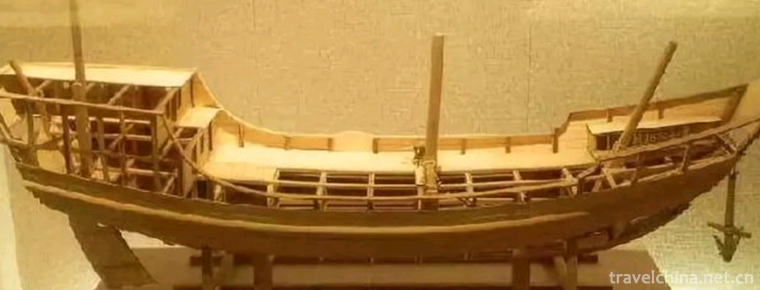
-
Mount Heng
Mt. Hengshan, also known as "Tai Mt. Hengshan", is known as "Xuanwu mountain" and "Yushan". Among them, inverted Ma Pass, Bauhinia Pass, Pingxiaoguan Pass, Yanmen Pass.
Views: 197 Time 2018-10-30 -
Qu Fuming Gucheng
Qufuming Old Town: World Cultural Heritage, one of the three holy cities in the world, national AAAAA tourist attractions, National Scenic spots, national key cultural relics protection units, one of .
Views: 171 Time 2018-12-08 -
Baili Rhododendron Scenic Area in Bijie City
Bijie Baili Rhododendron Scenic Area is located in the northwest of Guizhou Province and the central part of Bijie City. It belongs to the Baili Rhododendron Management Area of Bijie City..
Views: 219 Time 2018-12-12 -
Qilihai National Wetland Park
Qilihai National Wetland Park is located in the northeast of Tianjin, located in Ninghe District of Tianjin, 30 kilometers away from Tianjin urban area, 100 kilometers away from Beijing and 40 kilomet.
Views: 166 Time 2018-12-17 -
Guyang Qincheng Great Wall Site
The site of the Qincheng Great Wall in Guyang is located in the Yinshan Mountains in the central part of Inner Mongolia Autonomous Region, along the Damiao, Yinhao and Xidoupu in the northern part of .
Views: 119 Time 2019-01-12 -
Chongdugou Scenic Area
Zhongdugou Scenic Area, located in Luanchuan County, Luoyang City, Henan Province, was given the name of emperor because Liu Xiu, Emperor Guangwu of the Eastern Han Dynasty.
Views: 201 Time 2019-03-18 -
Hua gu deng Flower drum lantern
Flower drum lantern, a traditional dance in Bengbu City, Fengtai County and Yingshang County, Anhui Province, is one of the national intangible cultural heritage..
Views: 234 Time 2019-05-04 -
Manufacturing Techniques of Fukushima Ship with Watertight Cabin
The manufacturing technology of watertight compartment Fukushima, the local traditional handicraft technology of Jiaocheng District in Jinjiang and Ningde City, Fujian Province, is one of the national.
Views: 148 Time 2019-06-15 -
Uygur traditional knife making skills
Xinjiang handicraft knives (Yingjisha knife, Guizi knife, etc.) are generally more than ten or twenty centimeters long. The largest is more than half a meter and the smallest is only about two inches..
Views: 153 Time 2019-06-26 -
Sichuan University
Sichuan University is a national key university directly under the Ministry of Education, and a high-level research-oriented comprehensive university with national layout and key construction in Weste.
Views: 111 Time 2019-08-30 -
Beijing Institute of Fashion Technology
Beijing Garment College was founded in February 1959, formerly known as Beijing Textile Technology College. In July 1961, it was renamed Beijing Chemical Fiber Engineering College. It was a key univer.
Views: 333 Time 2019-09-06 -
Cultural undertakings in Luzhou
By the end of 2017, Luzhou had 8 cultural centers and 142 cultural stations, including 128 Township comprehensive cultural stations, 14 urban community (street) cultural centers, 9 public libraries, 2 art galleries and 13 museums (memorial halls), all of which are free of charge..
Views: 323 Time 2020-12-14

